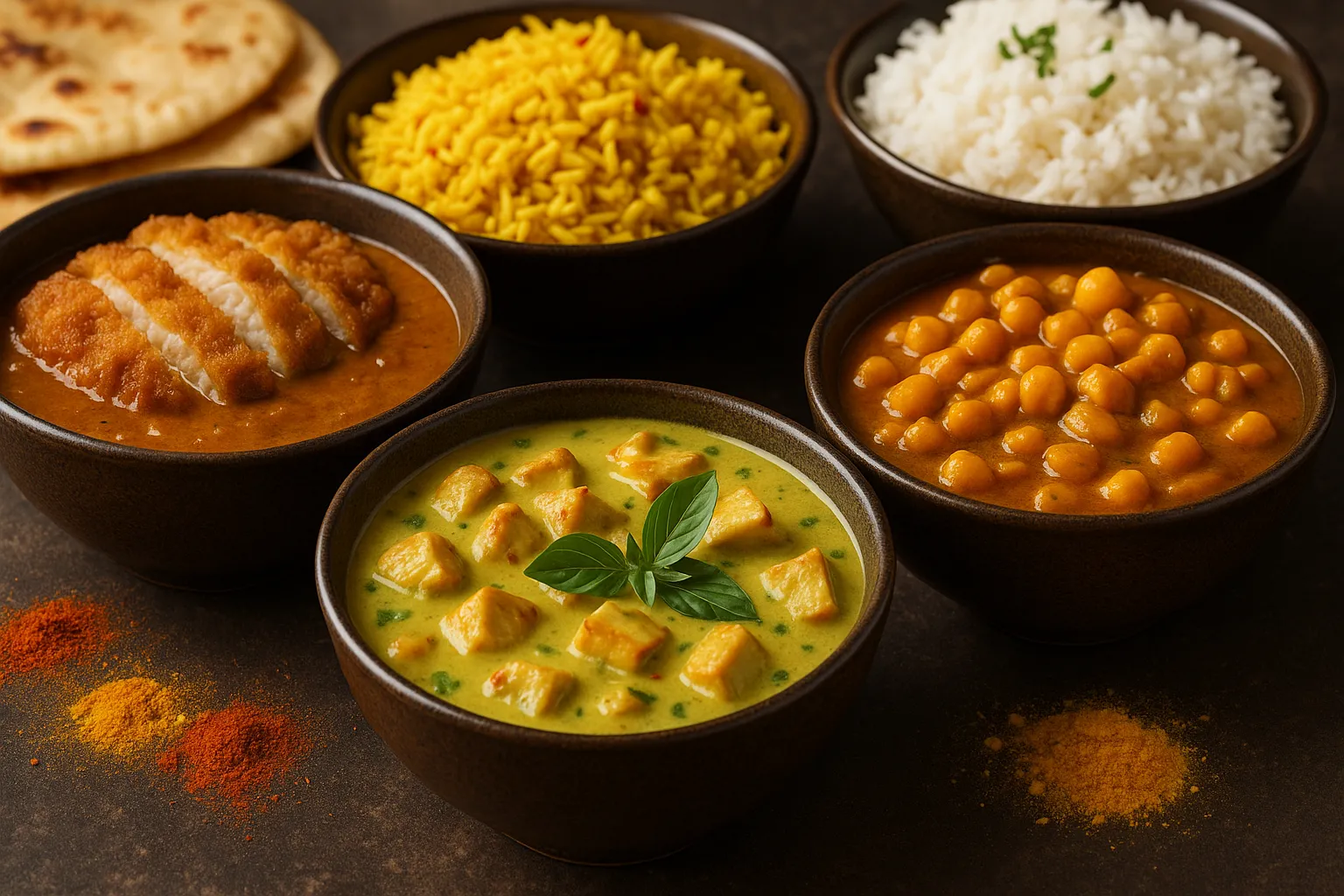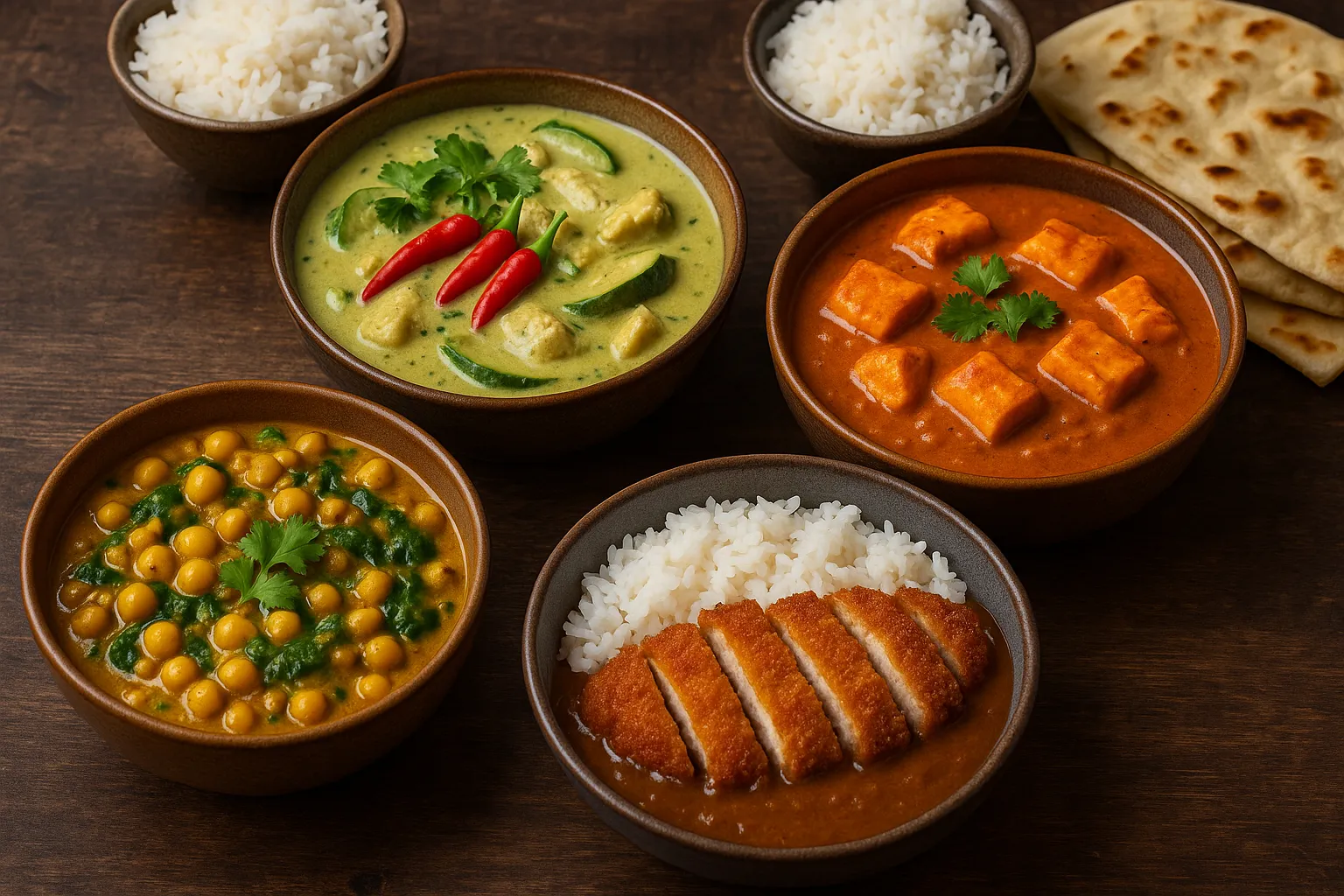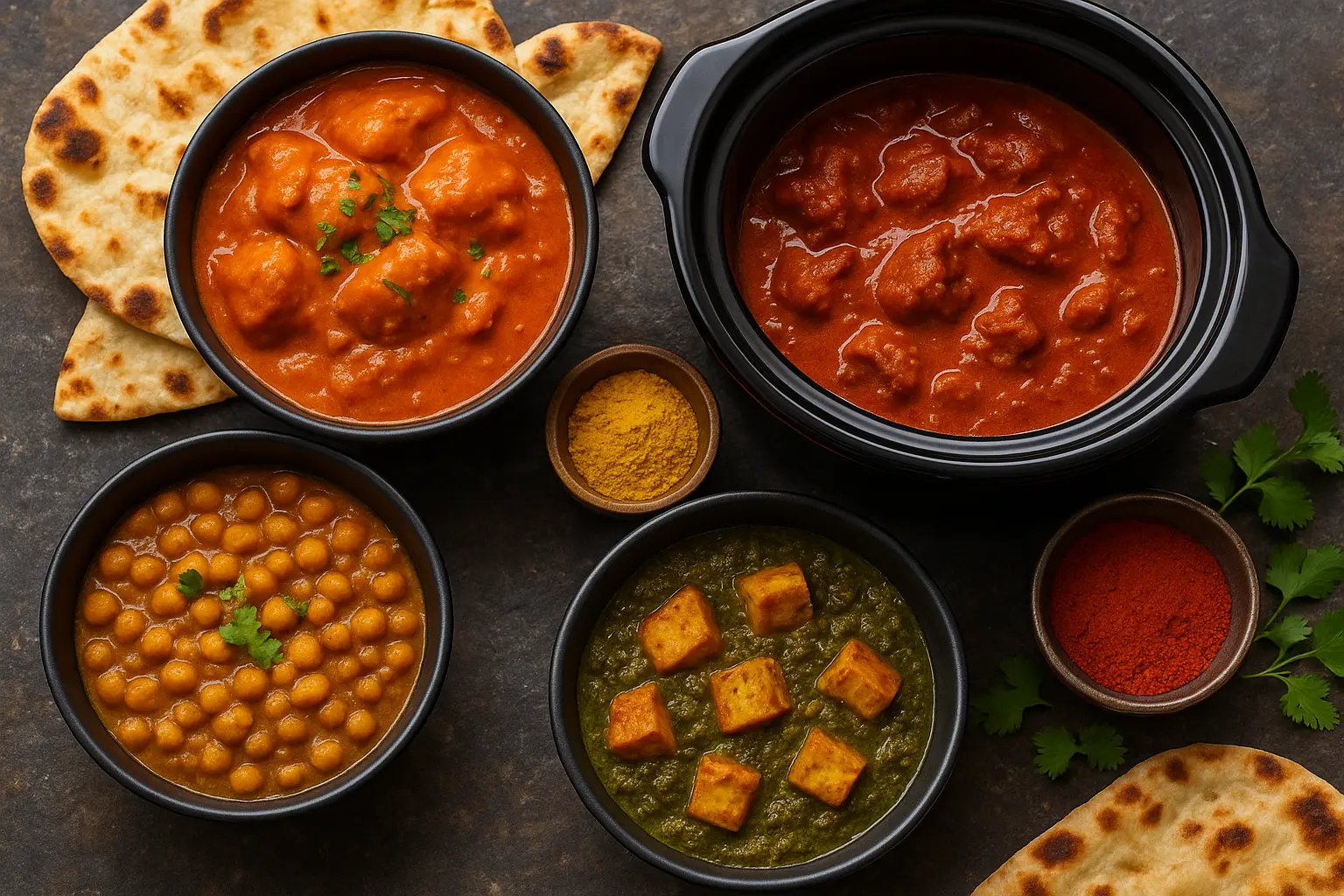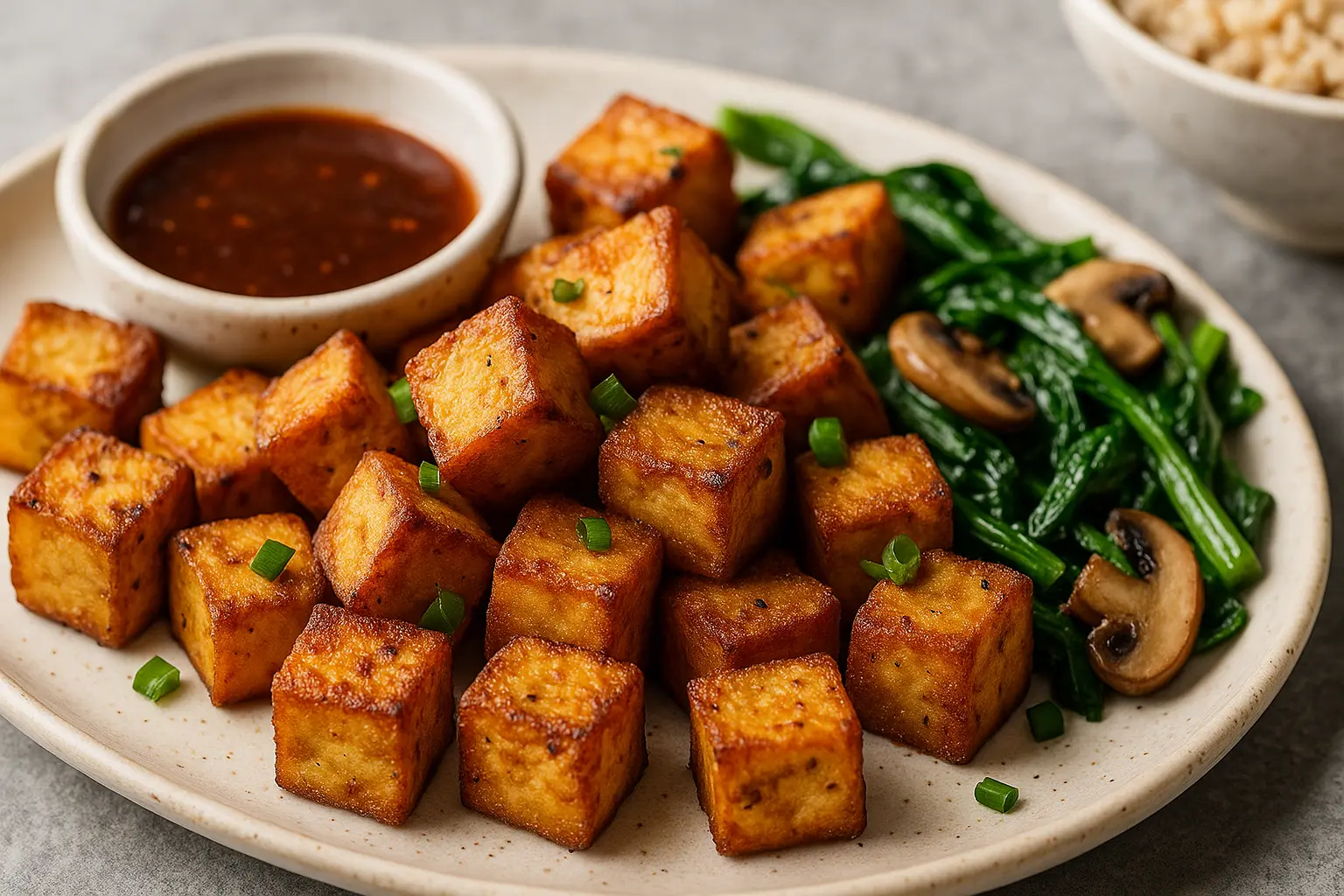Global Curries That Warm the Soul – Full Blog Content
Curries are more than just a dish—they are stories passed down through generations, flavour-packed experiences shared across tables, and cultural comfort bowls that nourish both body and spirit. From the slow-cooked, spice-laden gravies of India to the coconut-milk-infused broths of Southeast Asia, curries take countless forms around the globe. In this blog, we journey through the world’s most beloved curries, showcasing their unique ingredients, cooking methods, regional variations, and how you can recreate them in your kitchen.

What Defines a Curry?
Before we globe-trot through curry capitals, let’s explore what exactly makes a dish a “curry.” There’s no one-size-fits-all definition, but generally, a curry is:
A dish with a spiced sauce or gravy, often simmered with meat, vegetables, or legumes.
Typically served with a starch like rice, naan, or flatbread.
Rich in aromatic spices, which can range from cumin, coriander, and turmeric to cinnamon, clove, and star anise.
Varies in texture and flavor—from creamy and mild to hot and fiery.
Now let’s explore the diverse curry landscapes from different corners of the world.
1. Indian Curries – The Spiritual Home of Curry
India is undoubtedly the heartland of curries, with each region offering its own twist.
North Indian Curries:
Butter Chicken (Murgh Makhani): Creamy, tomato-based curry loaded with tandoori chicken pieces.
Paneer Tikka Masala: Cubes of paneer in a rich tomato and cashew gravy, perfect for vegetarians.
Rogan Josh (Kashmir): A deep red lamb curry spiced with cardamom and Kashmiri chillies.
South Indian Curries:
Sambar: A tamarind-laced lentil curry with vegetables. Often served with dosa or rice.
Kerala Fish Curry: Cooked in coconut milk, tamarind, and mustard seeds.
Chettinad Chicken Curry: Packed with pepper, cinnamon, and fennel—a fiery treat.
Indian Curry Hallmarks: Use of ghee, garlic-ginger paste, garam masala, heavy simmering, and layering of spices.
2. Thai Curries – Sweet, Spicy, and Aromatic
Thai curries bring together a perfect balance of sweet, sour, salty, and spicy.
Key Thai Curries:
Green Curry (Gaeng Keow Wan): Made with green chillies, basil, and coconut milk. Often includes chicken or tofu.
Red Curry (Gaeng Phed): Uses red curry paste made from dried red chillies—spicy and fragrant.
Massaman Curry: A milder curry with Persian influence. Made with peanuts, potatoes, cinnamon, and beef or lamb.
Thai Curry Features: Coconut milk base, kaffir lime leaves, fish sauce, galangal, lemongrass, palm sugar.
Pro Tip: Use store-bought curry pastes if you’re short on time, but homemade ones offer richer depth.
3. Japanese Curries – Comforting and Mild
Japanese curry (or kare raisu) is one of the most popular comfort foods in Japan.
Main Types:
Beef or Chicken Katsu Curry: Fried cutlet topped with thick brown curry sauce and served over rice.
Vegetable Curry: Often includes potatoes, carrots, and onions in a mildly spiced roux.
Signature Touches:
Slightly sweet due to grated apple or honey.
Uses a roux base (flour and butter) for thickening.
Less heat, more umami.
Serving Style: Japanese curry is almost always served with steamed rice and pickled vegetables.
4. Caribbean Curries – Island Heat and Sunshine
Thanks to Indian indentured laborers, curries became an island staple across the Caribbean.
Top Picks:
Jamaican Goat Curry: Uses allspice, Scotch bonnet peppers, thyme, and turmeric. Served with rice and peas.
Trinidadian Chicken Curry: Features bold cumin, garlic, and hot peppers.
Curry Crab and Dumplings (Tobago): A creamy seafood curry with handmade flour dumplings.
Key Ingredients:
Scotch bonnet, curry powder, allspice (pimento), coconut milk.
Often marinated meat before cooking for max flavor.
Texture: Caribbean curries are often thick and stew-like.
5. Malaysian & Indonesian Curries – Layered and Rich
The influence of Indian, Thai, and local Malay traditions makes for bold, diverse curry styles.
Popular Varieties:
Rendang (Indonesia): A dry curry where beef is slow-cooked in coconut milk, lemongrass, and galangal until it caramelizes.
Kari Ayam (Malaysia): Chicken curry cooked with curry leaves, potatoes, and coconut milk.
Gulai (Sumatra): Rich and vibrant with turmeric, chilli, and tamarind.
Flavor Profile: Strong emphasis on fresh spice pastes made with shallots, garlic, galangal, and chillies.
6. Middle Eastern Curries – Spice Without Fire
Though not traditionally called curries, Middle Eastern stews share a similar ethos.
Examples:
Moroccan Tagine: Chicken or lamb slow-cooked with dried fruits, saffron, and preserved lemon.
Persian Khoresh: Tomato-based stews flavored with dried lime, turmeric, and fenugreek.
Iraqi Curry (Quzi): Braised lamb with rice, nuts, and cinnamon-spiced tomato curry.
Main Features:
Heavily aromatic.
Emphasis on dried spices and slow cooking.
Served with couscous, flatbread, or rice.
7. African Curries – Earthy and Unique
Curry made its way to parts of Africa through trade and colonial history.
Noteworthy Dishes:
South African Bunny Chow: Hollowed-out bread filled with curry—often chicken or beans.
Ethiopian Doro Wat: A fiery chicken stew made with berbere spice and niter kibbeh (spiced butter).
West African Groundnut Stew: A peanut-based curry-like dish with chicken and vegetables.
Texture & Flavor: Often nutty, spicy, and tangy. Staples like peanuts, tomatoes, and yams shine.
8. British Curries – A Fusion of Heritage
Britain's love for curry has resulted in some unique creations.
Famous Dishes:
Chicken Tikka Masala: Often debated as a British invention, this creamy tomato-based dish is a pub staple.
Balti Curry: Served in a wok-like dish with bold spices and often eaten with naan.
Vindaloo: Originally from Goa, but transformed in Britain into a fiery chilli-heavy version.
Uniqueness:
Heavy use of cream or yoghurt.
Mild to medium spice, appealing to wider audiences.
British-style curry houses offer massive variety.
Making the Perfect Curry at Home – General Tips
Start with a Flavour Base: Onions, garlic, and ginger are the holy trinity in most curry styles.
Toast Spices: Enhances their fragrance and depth.
Don’t Rush: Simmering is key to flavor development.
Use the Right Fat: Ghee, coconut oil, or butter depending on the cuisine.
Balance Is Everything: A great curry hits sweet, salty, spicy, and sour notes.
Vegetarian & Vegan Curry Options
Many global curries are either plant-based or easily adaptable.
Examples:
Chana Masala (India): Chickpeas in tomato gravy.
Tofu Green Curry (Thailand): Swap meat for tofu.
Mushroom Rendang (Indonesia): Slow-cooked with shredded mushrooms.
Aloo Baingan (India): Potatoes and eggplant curry.
Lentil & Coconut Curry (Fusion): Creamy, spiced, and filling.
These curries are budget-friendly, high-protein, and make great meal prep.
Curry Pairings – What to Serve Them With
Depending on the cuisine, consider these traditional sides:
Rice: Basmati, jasmine, sticky rice, coconut rice.
Bread: Naan, roti, paratha, flatbreads, or crusty bread.
Pickles & Chutneys: Mango chutney, achar, raita.
Salads: Kachumber (India), cucumber salad (Thai), herb-heavy sides.
Dumplings or Noodles: For Caribbean and East Asian curries.
Curry and Culture – More Than a Meal
Curry is deeply woven into daily life, celebration, and community across cultures:
In India: A meal isn’t complete without a sabzi or curry.
In the UK: Friday night curry is a tradition.
In Japan: School lunches often include kare raisu.
In the Caribbean: Curries appear at weddings, holidays, and weekend family feasts.
Wherever it’s served, curry brings people together.
Meal Prep & Storage Tips for Curries
Curry is one of the best dishes for batch cooking. Here’s why:
Tastes better the next day as flavors deepen overnight.
Freezes well: Especially coconut or tomato-based curries.
Reheat gently to avoid curdling dairy or overcooking proteins.
Make double and enjoy it through the week with fresh rice or bread.
Final Thoughts: Why We Love Curries
Whether it’s a fiery vindaloo or a mellow korma, curries offer something for every palate. They connect us with culture, provide comfort, and can be endlessly customised. From the bustling kitchens of Mumbai to the night markets of Bangkok and the quiet kitchens of Tokyo suburbs, the aroma of a simmering curry pot speaks a universal language of warmth and home.
So go ahead—pick your destination, grab your spices, and let your kitchen become a portal to global comfort.
Leave a comment
Your email address will not be published. Required fields are marked *




